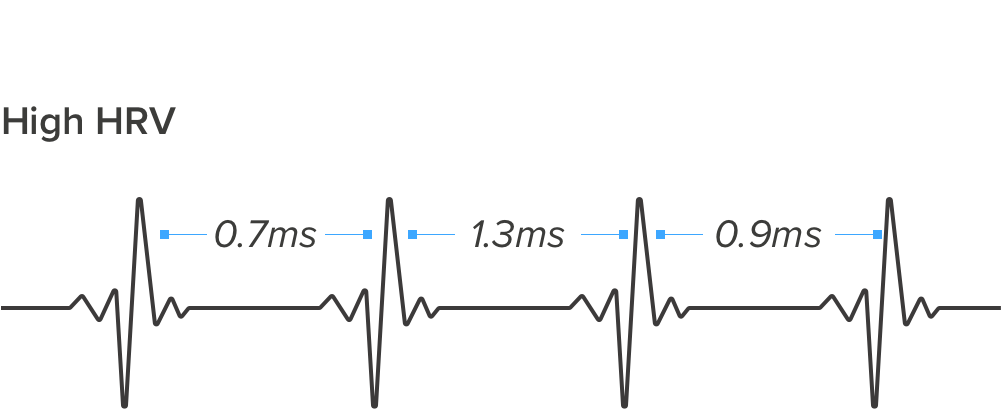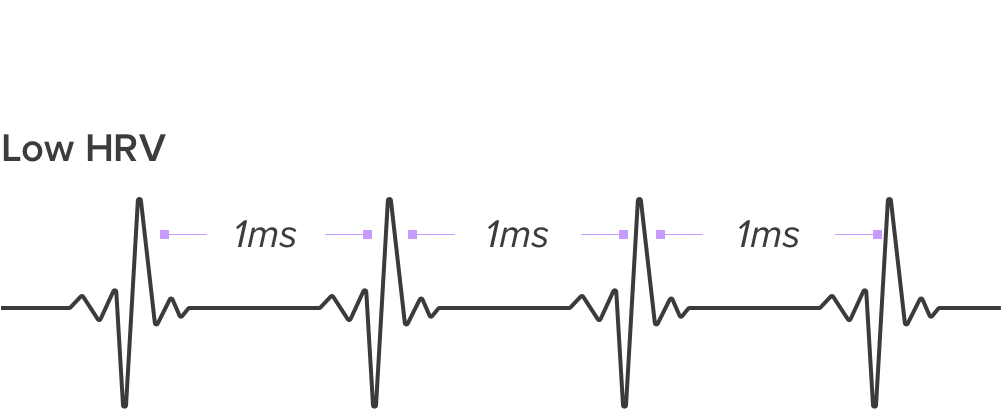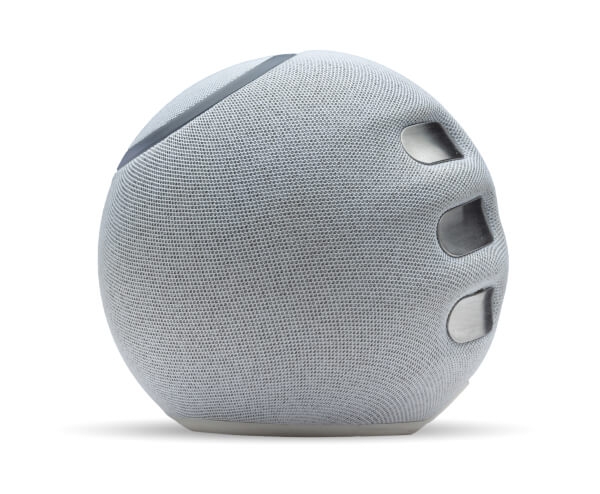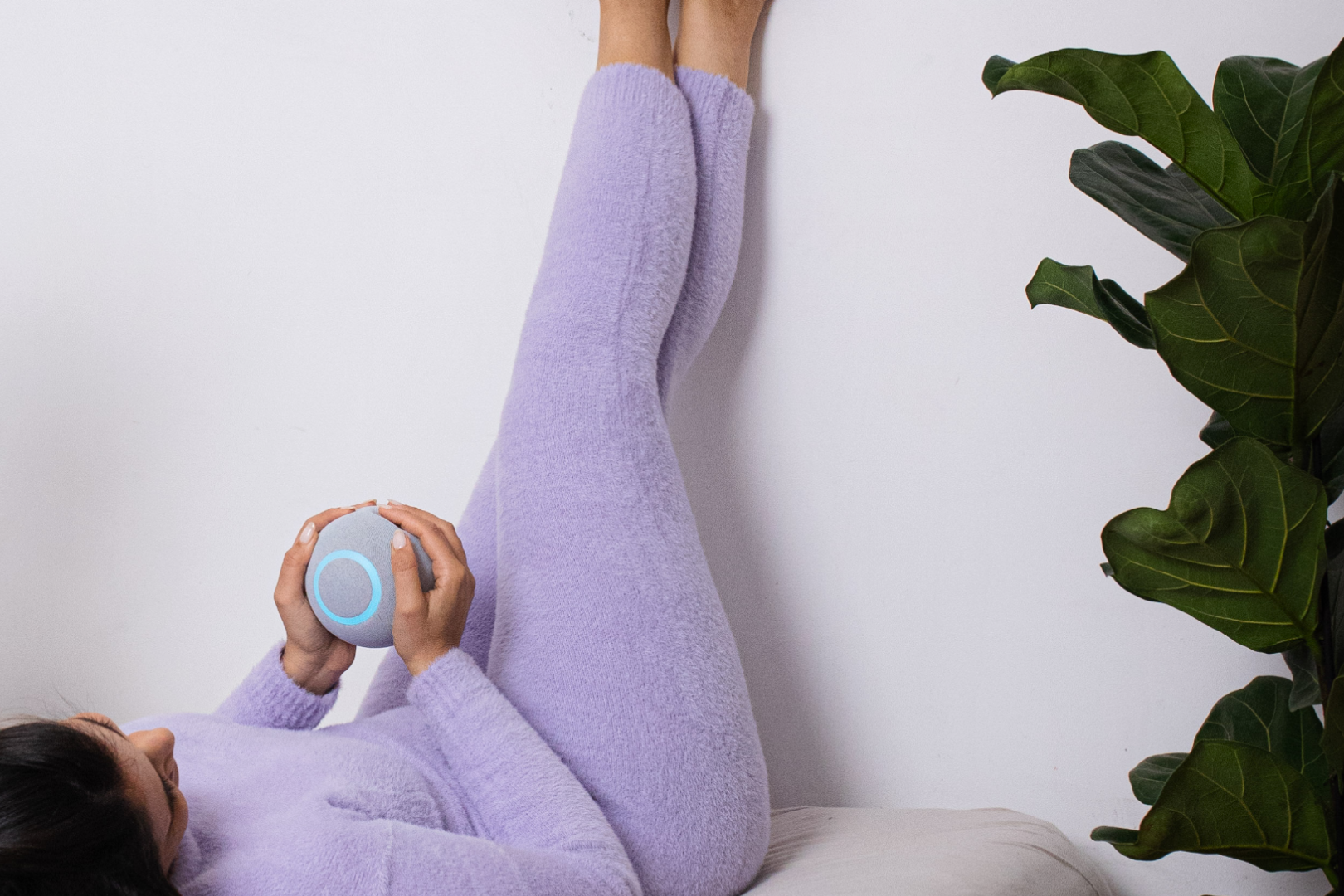As someone who cares about heart health, you may have heard about heart rate variability or HRV. While the term heart rate is commonly known and understood, heart rate variability is less so. However, HRV is an important measurement of your physical and mental stress levels.
How is heart rate variability different from heart rate? Should your heart rate variability be high or low? How can you improve your heart rate variability? You’ve got all the questions, and we’ve got the answers.
Keep reading to learn what heart rate variability is, why it matters, and what you can do to maintain a “good” heart rate variability.
What Is Heart Rate Variability?
Heart rate variability (HRV) is the measurement of the variation in time between heartbeats, in milliseconds. For the average person, the heart is not a ticking metronome – it does not beat in a regular pattern.
Rather, there are variations in the spacing of heartbeats which are largely dependent on stress levels and other factors. HRV is not to be confused with your heart rate, which measures the beats per minute. HRV shows the intervals between each heartbeat, and it often changes from one heartbeat to the next – even if your heart rate stays the same.


Let’s say your heart rate is 60 beats per minute. Your HRV is the time interval between those heartbeats. Some heartbeats may have a 1.3 millisecond space before the next beat, while others may only have 0.7 milliseconds.
An easy way to check your HRV is to monitor your pulse at rest with an HRV measuring device. Consider doing this while you are in a calm state, as during meditation, to gain a good baseline reading.
Why is Heart Rate Variability an Indicator of Stress?
HRV is an indicator of the body’s stress level. When it’s low, it means the body is more stressed, and when it’s high it means the body is less stressed. This might be counter-intuitive, because we are used to thinking about heart rate - low good, high bad - while HRV is the other way around.
What we are actually seeing when we measure HRV is how uniform our heartbeats are. But what does uniformity have to do with stress levels? Overall, the body allows for some flexibility in many of its systems - the heart, the brain etc. Science is not fully sure why, but it’s theorized that this flexibility contributes to adaptability.
This information might not matter much when everything is peaceful, but what happens when there’s a threat? When we are under stress - physical or mental - our body goes into a Fight or Flight mode and prioritizes responding to the perceived emergency. In this state, flexibility becomes less important and efficiency becomes more important - making our heart beat more uniformly (read: efficiently).
The more uniform our heartbeat is, the lower its variance - this is why low HRV indicates the body is under stress.
What Is a Good Heart Rate Variability?
No two people have the same heart rate variability, and what’s considered ‘normal’ will differ from person to person. Generally, though, a higher heart rate variability is an indicator of good heart health.
Remember, your heart rate variability is unique, and what is good for you may not be for someone else. Even so, you can get a general idea about what doctors consider to be healthy heart rate variability with this guide:
- HRV below 50 milliseconds: unhealthy
- HRV between 50-100 milliseconds: may indicate compromised health or well-being
- HRV above 100 milliseconds: healthy
Although a higher HRV typically correlates with better health, there are other considerations too. For example, younger people may have higher HRV than older people; males tend to have slightly higher variability than women; and endurance athletes may have higher HRV than non-athletes.
What Controls Heart Rate Variability?
The human body is very sensitive to stress, with a complex physiological make-up designed to respond appropriately and keep you safe. An example is the “fight or flight” response that alerts your body systems to perceived danger and adapts your heart rate, blood flow, and breathing accordingly.
Another physiological response is heart rate variability. All these responses, including HRV, are controlled by the autonomic nervous system (ANS), which is actually made up of two separate systems:
- Parasympathetic nervous system (PNS): This system dominates when you are in a calm state. It is also sometimes called the “rest and digest” system.
- Sympathetic nervous system (SNS): This system is in play when you are in “fight or flight” mode, or during exercise, and it regulates the various stress responses, such as increased blood pressure and heart rate.
The PNS and SNS send signals simultaneously to the heart, causing a fluctuation between heartbeats (HRV). The parasympathetic nervous system, which is responsible for the “relaxation response,” tells your heart to slow down, allowing for some changes between each beat.
On the other hand, the sympathetic nervous system, which is responsible for the “fight-or-flight” response, tells your heart to pump faster, reducing the space for changes in its rhythm, leading to a lower HRV. Although these two systems make up the main “control panel” of your HRV, other factors play a role in these variability rates.
Factors That Influence Your Heart Rate Variability
The ANS is extremely sensitive and reactive, and this is reflected in the variability of your heart rate. There are many factors that can influence heart rate variability, some of the most common being:
- Physiological: Age, gender, and circadian rhythm can all affect your HRV.
- External and environmental: External stressors drive the nervous system to action and this can cause changes in your HRV. Some examples include climate, noise exposure, and induced pain or discomfort.
- Lifestyle: Fitness levels, sleeping habits, weight, smoking, and alcohol consumption all play a role in HRV. Increased body weight, sedentary lifestyles, and moderate alcohol consumption can all lead to a decrease in your HRV.
- Medical: Research suggests that various diseases, including heart disease and lung disease, can lower a person’s HRV.
- Emotional: Emotional stress, such as anxiety, depression, anger, and trauma can all affect the nervous system and reduce HRV.
How Do You Measure Heart Rate Variability?
Variations in the time between heartbeats are very small, so measuring your HRV is nearly impossible without the help of specialized devices. One of the ways to check HRV is with electrocardiogram machines (EKGs), which measure the heart's electrical activity via sensors attached to your chest.
This is done in a medical clinic or another healthcare setting. It can also be done at home with a personal EKG monitor. Other devices, like chest strap heart monitors and at-home biofeedback devices, are a great way to measure HRV and can provide an accurate HRV reading. On the contrary, Wrist-worn fitness devices that track your heart rate may not be sensitive enough to accurately check your HRV.
Why Is Measuring Your Heart Rate Variability Important and What Does It Indicate?
Your physiological responses offer an excellent indication of your overall wellness. When your blood pressure is elevated, or your palms are sweaty, this may mean that you are struggling with stress in your life and need better ways to manage it. The same is true for HRV.
Heart rate variability is a reflection of how adaptable your body is to different circumstances, so it can help identify any imbalances in the nervous system. A person with low HRV may have a compromised ability to cope with acute stress, while someone with a high HRV may have developed healthy strategies for managing stress.
Your HRV can also indicate whether your lifestyle choices, such as diet and physical fitness, are benefitting or damaging your wellness level. Think of HRV as a barometer of your body’s ability to cope with the challenges of day-to-day life, and use it as a guide to make adjustments and increase your wellbeing.
How Can I Improve or Maintain My Heart Rate Variability?
You’ve learned all about heart rate variability, how it works and why it is important to your health and wellbeing. Now for the big question: Can you improve your HRV? Of course, you can! While many of the body’s physiological responses are involuntary, you can learn to control and enhance them. This is also true for HRV. Here are several ways to improve and maintain a healthy HRV:
Take care of your body
Exercising regularly and eating a balanced diet is the basis for a healthier body and heart. With regular and proper care, your health will improve, and this can also help you achieve a better HRV.
Get enough sleep (and make it quality sleep!)
During sleep, the body undergoes critical repair and regeneration processes; adults need a minimum of 7 hours of sleep a night for optimal health. Keeping your circadian rhythm regular can help boost HRV, so it’s also important to make sure you develop a solid sleep routine.
Take care of your mental health
Science is finally beginning to understand the importance of the mind-body connection. There is probably nothing more important to your physical health – and to a good HRV – than taking care of your mind and spirit. Reducing stress levels, practicing relaxation, and finding joy in your life can all make a huge difference to your HRV.
Do breathwork
Breathwork is a critical part of mind-body relaxation, and breathing techniques are often used in mindfulness and meditation practice. Slow, intentional breathing exercises can help fight stress and control the body’s nervous system response, in turn boosting HRV.

Try biofeedback training
Biofeedback training is a technique that helps you observe your body’s physiological responses in real-time, and learn ways to improve them. Biofeedback is also very useful for improving your HRV. There are biofeedback devices that you can use at home, in conjunction with breathwork, meditation, and mindfulness practices that may already be part of your daily wellness routine.
The Reflect Orb, for example, uses biofeedback to measure various physiological signals and reflect them back to you – giving you the ability to manage stress levels and maintain a healthy HRV.
The final ingredient for healthy HRV
As with any new healthy habit, change won’t happen overnight. If you are looking to improve your HRV, expect to begin to notice changes within 30 to 60 days.
Perhaps the most important ingredient for improving your HRV is patience. By following the techniques above – consistently and patiently – and with the help of a good quality biofeedback device, you can raise your HRV and continue on the path to health, wellness, and tranquility.






